4-Phenyl-2-butanol
Synonym(s):α−Methyl-benzenepropanol
- CAS NO.:2344-70-9
- Empirical Formula: C10H14O
- Molecular Weight: 150.22
- MDL number: MFCD00044349
- EINECS: 219-055-9
- SAFETY DATA SHEET (SDS)
- Update Date: 2024-06-28 10:31:38
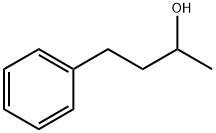
What is 4-Phenyl-2-butanol?
Chemical properties
CLEAR COLOURLESS LIQUID
Chemical properties
4-Phenyl-2-butanol has a herbaceous, aromatic, floral-fruity odor.
The Uses of 4-Phenyl-2-butanol
4-Phenyl-2-butanol is a reagent used for the direct alkylation of amines with primary and secondary alcohols through biocatalytic hydrogen borrowing. It is also used in the preparation of personal care composition comprising malodor reduction compositions.
Preparation
The optically inactive product can be prepared by hydrogenation of benzylidene acetone in alcohol solution; under pressure in the presence of platinum oxide, palladium oxide or ferrous sulfate; by reduction with magnesium in methanol.
Synthesis Reference(s)
Tetrahedron Letters, 30, p. 6461, 1989 DOI: 10.1016/S0040-4039(01)88994-2
General Description
4-Phenyl-2-butanol undergoes (η5-pentaphenylcyclopentadienyl)RuCl(CO)2 catalyzed racemization efficiently at room temperature in the presence of a base. 4-Phenyl-2-butanol on reaction with sulfuric acid yields polymer.
Properties of 4-Phenyl-2-butanol
| Melting point: | 61 °C |
| Boiling point: | 132 °C/14 mmHg (lit.) |
| Density | 0.970 g/mL at 25 °C (lit.) |
| refractive index | n |
| FEMA | 2879 | 4-PHENYL-2-BUTANOL |
| Flash point: | 231 °F |
| storage temp. | Sealed in dry,Room Temperature |
| solubility | Almost insoluble in water, soluble in alcohol and oils |
| pka | 15.10±0.20(Predicted) |
| form | liquid |
| color | Colorless |
| Odor | at 100.00 %. floral peony foliage sweet mimosa heliotrope |
| JECFA Number | 815 |
| BRN | 1908294 |
| CAS DataBase Reference | 2344-70-9(CAS DataBase Reference) |
| NIST Chemistry Reference | 4-Phenyl-2-butanol(2344-70-9) |
Safety information for 4-Phenyl-2-butanol
| Signal word | Warning |
| Pictogram(s) |
 Exclamation Mark Irritant GHS07 |
| GHS Hazard Statements |
H302:Acute toxicity,oral H315:Skin corrosion/irritation H319:Serious eye damage/eye irritation H335:Specific target organ toxicity, single exposure;Respiratory tract irritation |
| Precautionary Statement Codes |
P261:Avoid breathing dust/fume/gas/mist/vapours/spray. P305+P351+P338:IF IN EYES: Rinse cautiously with water for several minutes. Remove contact lenses, if present and easy to do. Continuerinsing. |
Computed Descriptors for 4-Phenyl-2-butanol
New Products
(S)-3-Aminobutanenitrile hydrochloride 4-Methylphenylacetic acid N-Boc-D-alaninol N-BOC-D/L-ALANINOL Tert-butyl bis(2-chloroethyl)carbamate 3-Morpholino-1-(4-nitrophenyl)-5,6-dihydropyridin- 2(1H)-one Furan-2,5-Dicarboxylic Acid Tropic acid 1-Bromo-3,5-Di-Tert-Butylbenzene S-2-CHLORO PROPIONIC ACID ETHYL ISOCYANOACETATE 2-Bromo-1,3-Bis(Dimethylamino)Trimethinium Hexafluorophosphate 4-IODO BENZOIC ACID 3-NITRO-2-METHYL ANILINE 1-(2,4-DICHLOROPHENYL) ETHANAMINE (2-Hydroxyphenyl)acetonitrile 4-Bromopyrazole 2-(Cyanocyclohexyl)acetic acid 4-methoxy-3,5-dinitropyridine 1-(4-(aminomethyl)benzyl)urea hydrochloride 2-aminopropyl benzoate hydrochloride diethyl 2-(2-((tertbutoxycarbonyl)amino) ethyl)malonate tert-butyl 4- (ureidomethyl)benzylcarbamate Ethyl-2-chloro((4-methoxyphenyl)hydrazono)acetateRelated products of tetrahydrofuran
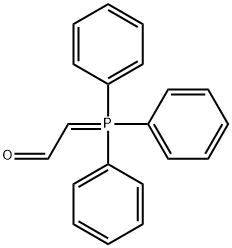


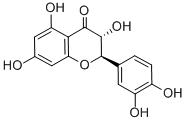

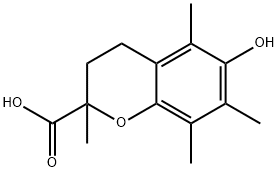
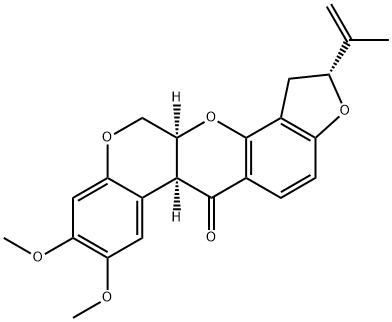

You may like
-
 (+/-)-4-Phenyl-2-butanol CAS 2344-70-9View Details
(+/-)-4-Phenyl-2-butanol CAS 2344-70-9View Details
2344-70-9 -
 4-Phenyl-2-butanol CAS 2344-70-9View Details
4-Phenyl-2-butanol CAS 2344-70-9View Details
2344-70-9 -
 4-Phenyl-2-butanol CAS 2344-70-9View Details
4-Phenyl-2-butanol CAS 2344-70-9View Details
2344-70-9 -
 1975-50-4 98%View Details
1975-50-4 98%View Details
1975-50-4 -
 2-HYDROXY BENZYL ALCOHOL 98%View Details
2-HYDROXY BENZYL ALCOHOL 98%View Details
90-01-7 -
 2-Chloro-1,3-Bis(Dimethylamino)Trimethinium Hexafluorophosphate 221615-75-4 98%View Details
2-Chloro-1,3-Bis(Dimethylamino)Trimethinium Hexafluorophosphate 221615-75-4 98%View Details
221615-75-4 -
 14714-50-2 (2-Hydroxyphenyl)acetonitrile 98+View Details
14714-50-2 (2-Hydroxyphenyl)acetonitrile 98+View Details
14714-50-2 -
 118753-70-1 98+View Details
118753-70-1 98+View Details
118753-70-1